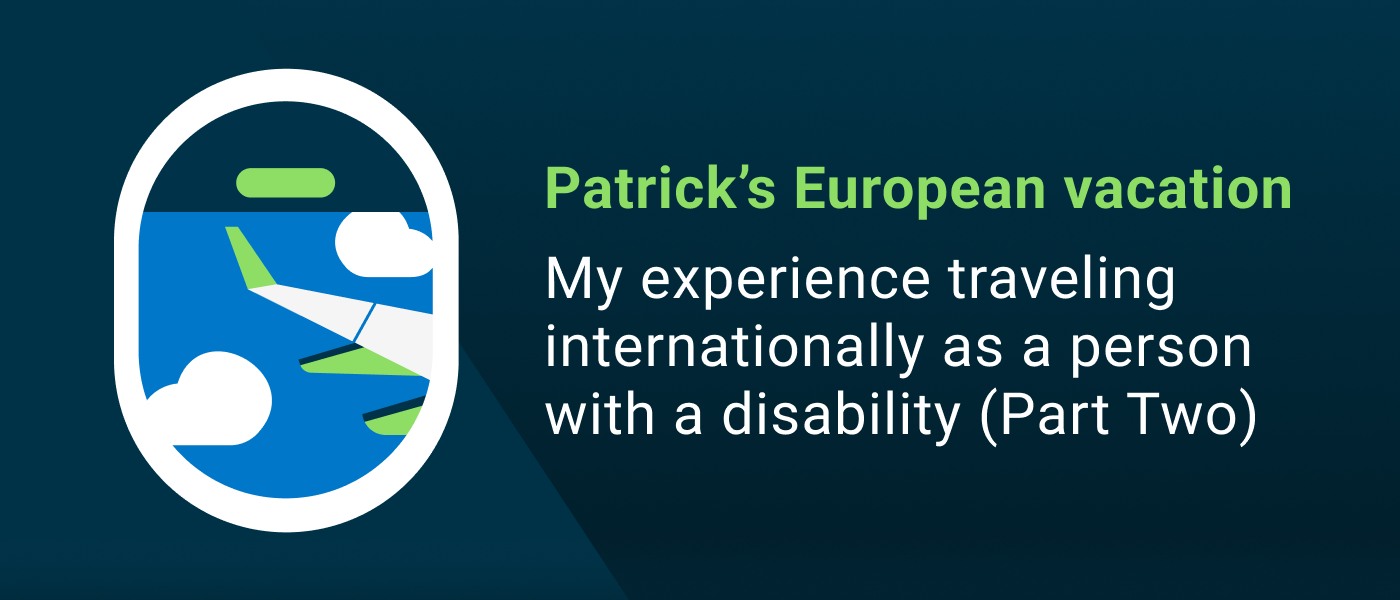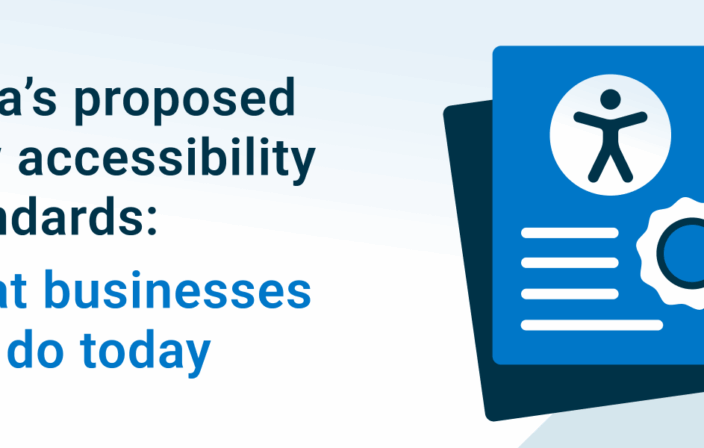Thank you for joining me to learn about the second part of my journey overseas. In this post, I’ll cover my experiences on the plane as we flew to Germany from Texas and how it went with landing, deplaning, and getting through customs. If you want a refresher before diving in, you can read Part One here.
And with that, let’s catch up with Patrick (me) in the air!
Noise levels in the cabin
In general, the flight over was very enjoyable. As you may recall from Part One, I was traveling with a new carrier, and I’m happy to say that my first excursion with this German airline was a positive one, especially in the noise-level department, as the airplane was the quietest I have ever experienced—and I was sitting just forward of the wing! I know that in-cabin noise can vary and is often louder in older planes. I also know that where you sit can make a difference, so I was especially happy about the noise levels, given my seat location.
People with certain disabilities can have sensory processing differences, be sensitive to loud noise, or experience difficulty concentrating or understanding information when there is too much background or environmental noise. Items like noise-canceling headphones can help, but a quiet plane is great, too!
My helpful seat companion
For this trip, I was in premium economy, which meant I got additional legroom, a pillow, and a blanket. I was seated on the aisle in a grouping of two seats, with the other seat being on the window side. I was fortunate to share my experience with a seat companion who was a very lovely lady flying home to Germany to visit her ninety-plus-year-old mother. She was quite a conversationalist and very eager to read things to me, describe things, and flag down flight attendants when I needed something.
I mention this because, on this flight, I encountered a certain digital accessibility concern that I didn’t expect. We were flying on a European-built wide-body airliner that—per the airline—was almost new. The interior was very crisp, clean, and modern in many respects. However, I was surprised to find that the plane had a touchscreen-based tablet affixed to the back of each seat—commonly known as an In-Flight Entertainment (IFE) unit.
Challenges with the in-flight entertainment system
I had been under the impression that most aircraft manufacturers were moving to a “bring your own device” model, but perhaps that’s not yet the case everywhere. I know that when I flew to Germany six years ago, I was also confronted with an IFE unit in front of me, and as a blind traveler, it was as useless to me then as was this newer example.
Fortunately, the IFE unit was mostly not an issue, at least not initially. Expecting not to have access to music or videos on any sort of in-flight system, I had come prepared with my own wealth of books and music on my iPhone to keep me entertained for the ten-hour flight.
What I did not realize until my seatmate pointed it out was that the call button for assistance was not a physical button on the seat arm or overhead but a control on the touchscreen. How was I supposed to find it? I was fortunate enough to have a seatmate who had no problems touching the panel for me if I needed assistance. But what would I have done if she was sleeping? What if the seat hadn’t even been filled at all, or if the person who filled it wasn’t willing or able to help me?
Since I couldn’t access anything on the touchscreen unit on my own, I mostly just ignored it. Instead, I relied on my newfound friend for assistance when I needed something that was touchscreen-based, like determining where we were on our route or how long it was until we arrived. Most importantly, I had a friendly seatmate nearby to assist in getting the attention of the flight staff. But that’s not always going to be the case for myself or anyone else with a disability who is flying, so this is an issue that needs to be addressed.
There is probably some disagreement out there as to whether things like flight information and entertainment are essential to a successful flight. That’s understandable. However, the ability to call for assistance is a crucial feature that one should not be denied equal access to just because of having a disability.
For myself, I know I could also just get out of my seat and wander up front to ask the crew in person. However, based on some past experiences, I’ve learned this can make some flight personnel nervous. If I stand up and start moving around, they get concerned that I will get lost in the plane—why, I cannot comprehend. But it’s all the more reason to have another means to call for assistance.
Other than the issue with the IFE, the flight was a pleasant one. Ten hours later, we were ready to touch down.
My helpful escort at the German airport
Landing, deplaning, and getting through customs all went smoothly thanks to the expert assistance of my German escort, provided by the Frankfurt airport.
I mentioned in my previous post that in the US, individuals dedicated to assisting people with disabilities are not airport staff. They are contracted by the airlines. I don’t know whether this fact contributes to the varying levels of support and service you receive, but if my Frankfurt experience is any indication, shifting responsibility to the airports could be a great idea! My escort was very professional and knowledgeable, spoke six languages, knew everything about the Frankfurt airport, and successfully delivered me to my waiting relatives.
Conclusion
That’s the end of Part Two! Thank you for “flying” with me (sorry, I couldn’t resist) as I share my experience of traveling internationally as a person with a disability.
In my third and final post, I’ll share about my time in Germany and what it was like flying back to Texas. Given how long the flight was, I had a lot of time to think. I’ll also relay some of the big questions I was pondering about travel, accessibility, and the local and global regulations that impact these experiences for people with disabilities.
Until then, stay safe out there, and if you find yourself sitting next to someone on a plane who is unable to use the touchscreen, help them out. They’ll appreciate it more than you know.




